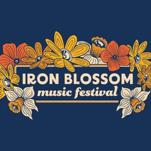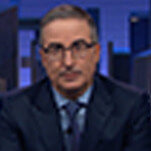And Janis Joplin
This article originally appeared in Issue 18 of Crawdaddy on Sept. 1, 1968.
One, two, and one, the men come out on the stage, pick up instruments. The drummer has his hair in a ponytail. Scapula-length blond hair on the lead and rhythm guitarists. They are all terribly thin, ethereal. They tune up, and the notes that fall into the audience are harsh, fuzz-heavy. Tune-up takes an awfully long time, but in their emaciated way, they are four of the most beautiful people I’ve ever watched. And there’s this frumpy little chick in elephant pants and black lace sweatshirt standing by one of the amplifiers—the audience knows who she is and gasps as she ambles into the light, takes a sip from the glass nearby, runs her hands down her hair, just a little longer than the boys’, but rough like dark hemp.
There is nothing at all glamorous about her; what figure she has is all lost in the loose clothing. But everybody watches her. The drummer comes in from somewhere, and the first song defines itself from the tonal hash of instruments tuning. The guys step toward their vocal mikes. She is moving now, and moving forward. The sound has reached an incredible intensity in no time. She begins to fight her way out from under all that hair, gets hold of her mike stand. The up beat catches her down in the shins and shakes her out to her fingers. She and the beat come down together, and that voice, a cross between Sophie Tucker and a Harley-Davidson, leaps—
You’ve had it. You can’t watch anything else. Each note from the other musicians strikes her body like light striking a concaved mirror. She throws it at you. Hard. And aimed six inches below the navel. You climb up the back of your seat if you’re sitting. If you’re standing, you double over and shake. They might as well turn on the light show for all you can see of it while she’s onstage. There’s just her, at the apex of a sonic pyramid that pulses, that beats, that explodes. Her head bobs like a hazy piston. She conducts the guys with her knees, twists the notes from the other players with palsied fists and hurls them at the audience with all the passion of—
Cut. Stop the action. Because this is primarily a discussion of Cheap Thrills, the second album by Big Brother and the Holding Company. So some flat statements: Big Brother and the Holding Co. are the most exciting theatrical gestalt in the blues/rock area I have ever, ever seen. They are unpretentious, natural, terribly alive; nor do I see how a singer could possibly project a greater sense of gusto and engagement than the lady in the baggy pants; the guys complement her so obliquely well—someone hollers up from the dance floor, “Hey, which one of you is Big Brother?” And she steps forward and growls into the mike, “l am, baby!,” perfect Mae West vintage—most people are completely unaware of the process; so it’s that much more effective.
Still, a live performance is a theatrical gestalt. A record is something else.
On the positive side, this record is such an improvement over the first, it’s not funny. The first was incomplete at its release, and I gather the group itself was not too happy about the business.
A fair percentage of the material on Cheap Thrills is from live appearances at the Fillmore, and the whole album is steeped in the flavor of Flock Ballroom. Even as one of the Holding Co.’s most avid fans, through half a dozen concerts I’d always assumed their instrumental arrangements were practically simple-minded. Far from it; on this record you get a chance to hear just how intelligent and complex the instrumental textures are. Considering the group has limited itself to an extremely harsh tonal fabric to appropriately support the lady, there is much variety inside that harshness.
But there are problems.
One with the lady herself: you come away from a concert thinking her voice is huge. A little common sense and any knowledge of the vocal machine, however, and you realize she’d be stone mute in six months if that sound were made full throat. In person, you get to watch each note start somewhere around her ankles, work its way up behind the veils, and break on loose. Well, you can’t put that on a record nohow. For all the involvement the voice still has here, it somehow lacks well, body. The other side of the problem is that, all by itself, the voice has a quality like electronic distortion. Works great live to accent all those fine and lovely things going on, around, and through the lyrics. On the cruel disk, it comes out like electronic distortion, blurring and blunting those same things it underlined.
So many of the problems with this record spring from the inchoate nature of the medium. One has to approach a tape thoroughly aware that one is translating from one medium to another. By now even most laymen are articulately aware of some of the particular aesthetic problems that arise while turning a play into a movie. A little less aware, but aware nonetheless, when it’s turning a book into a play, a short story into a ballet. Creating an exciting record from music conceived for live performance poses exactly the same sort of problems.
-

-

-

-

-

-

-

-

-

-

-

-

-

-

-

-

-

-

-

-

-

-

-

-

-

-

-

-

-

-

-

-

-

-

-

-

-

-

-

-








































